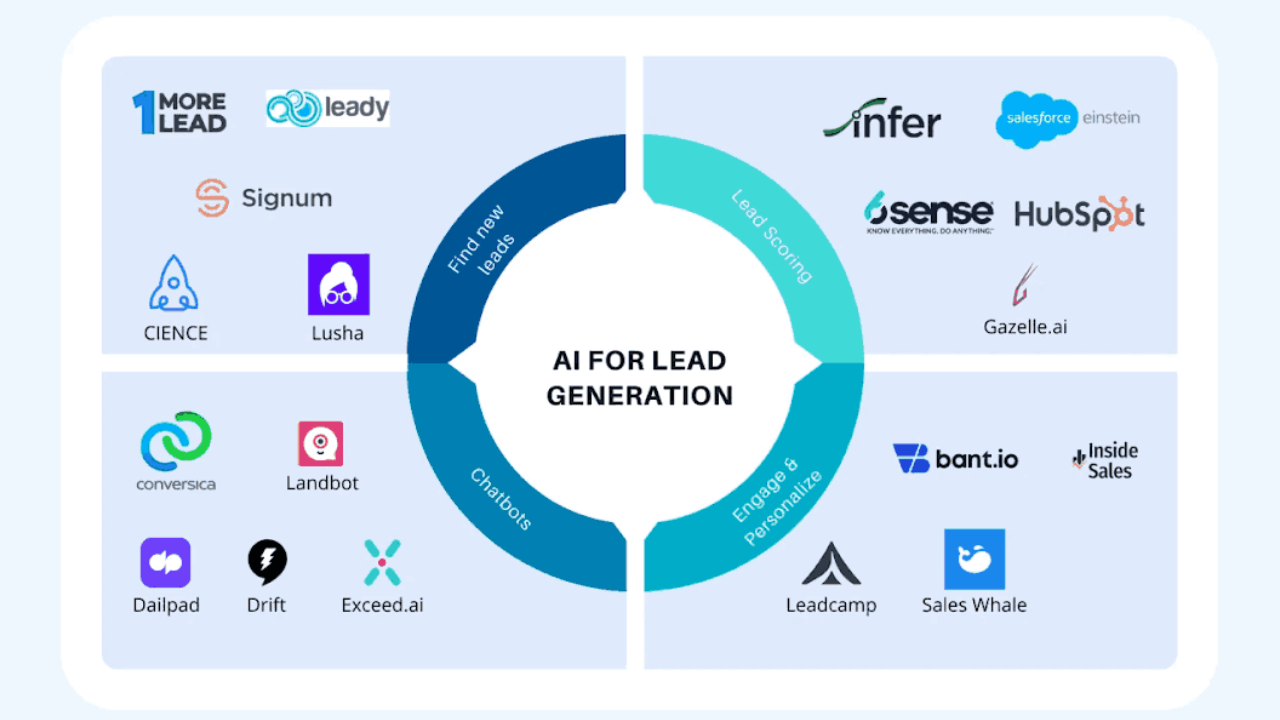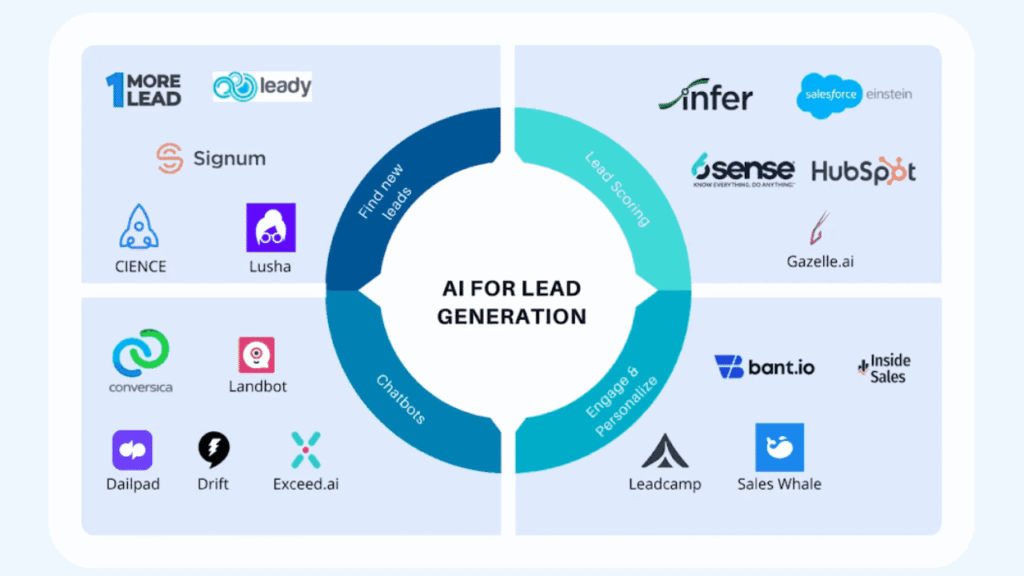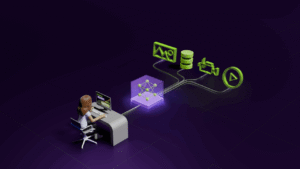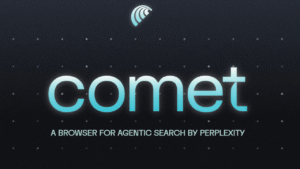The New Sales Imperative
Enterprises face digital-first buyer journeys where manual prospecting is inefficient and error-prone. By 2027, 95% of seller research workflows will begin with AI—up from less than 20% in 2024—which underscores the urgency to integrate AI in sales research and outreach. Moreover, 67% of IT leaders rank generative AI as a top priority for their organizations in the next 18 months, highlighting broad strategic buy-in at the executive level.
2. Top AI Tools & Core Capabilities
2.1 End-to-End Sales Engagement
-
HubSpot Sales Hub AI embeds Breeze AI agents for predictive lead scoring, email optimization, and workflow triggers directly within the CRM, helping firms like Banca Aidexa reduce SME financing cycles to 48 hours.
-
Salesforce Einstein analyzes historical opportunity data to forecast deal outcomes, recommend next steps, and automate data entry—enabling reps to focus on relationships rather than admin tasks.
2.2 Multichannel Cadence & Forecasting
-
Outreach sequences emails, calls, and social touches with AI-powered next-step recommendations and pipeline forecasting, improving forecast accuracy by up to 25% in early adopters.
-
Gong Revenue Intelligence applies AI to conversation analytics, revealing winning behaviors and coaching opportunities; a Forrester study found Gong delivers a 481% three-year ROI.
2.3 Real-Time Discovery & Enrichment
-
ZoomInfo provides buyer intent signals and technographic data, alerting reps the moment prospects research key products—enabling 30% faster outreach to in-market accounts.
-
Clearbit Enrichment auto-fills form fields and appends firmographic details, cutting manual data entry by 80% and boosting form conversions by 15%.
-
Seamless.AI’s ROI Dashboard gives admins insights into subscription performance and lead-gen metrics, supporting ongoing optimization.
-
Cognism automates prospect list building with verified mobile data and intent triggers; Drift’s integration booked 70% of its outbound meetings via Cognism’s enriched contacts.
2.4 Conversational Qualification
-
Drift chatbots engage website visitors, qualify intent, and hand off MQLs in real time—Twilio saw a 150% increase in site-visit-to-meeting conversions and saved 40 hours/month on audience targeting.
-
LeadiQ captures LinkedIn prospects and syncs them into CRMs automatically, reducing prospecting time by up to 70%.
3. Real-World Use Cases
-
Alta’s AI Agents automate prospecting, outreach, and scheduling across 50+ business applications, freeing sales teams from administrative work and scaling outreach without headcount increases.
-
Jasper’s Generative AI identified 10,000 new prospects and automated email sequences, accelerating pipeline velocity by 3× and cutting cost-per-lead by 40%.
-
VKTR Logistics implemented predictive scoring and NLP chatbots to qualify inbound leads, reducing qualification times by 60% and lifting MQL-to-SQL conversion by 25%.
-
Enterprise SDR Automation: Nooks AI conducted cold calls, booked meetings, and followed up autonomously, increasing outbound call capacity by 5× while preserving response quality.
4. Integration & Governance
4.1 API-First Architecture
Leverage native connectors (HubSpot, Salesforce, Dynamics 365) and middleware tools (Zapier, Workato) to ingest AI insights and intent signals directly into CRM records and sales workflows.
4.2 Data Quality & Privacy
Implement regular data audits, deduplication, and standardization to ensure reliable AI predictions. Embed consent management and audit trails for GDPR, CCPA, and sector-specific compliance.
4.3 Change Management
-
Cross-Functional SLAs: Align marketing on MQL enrichment and handoffs; sales on AI-prioritized outreach.
-
Training Programs: Educate reps on interpreting scores, managing bot escalations, and refining outreach based on AI feedback.
5. Measured Impact & ROI
-
Conversion Uplift: AI-driven lead scoring and personalization yield 20–40% higher conversion rates.
-
Time Savings: Sales teams reclaim up to 30% of prospecting hours by automating research and follow-ups.
-
ROI: Forrester reports a 481% three-year ROI from Gong’s Revenue Intelligence; enterprises adopting AI see revenue growth of 83% versus 66% for non-adopters.
-
Cost Efficiency: Generative outreach reduces cost-per-lead by up to 40%, as demonstrated by Jasper and Drip campaigns.
6. Challenges & Considerations
-
Data Drift: Stale or incomplete records undermine AI accuracy—continuous cleansing is essential.
-
Buyer Fatigue: Over-automation without personalized human touch can alienate prospects.
-
Ethical AI: Maintain transparency in AI-driven communications and safeguard customer data.
Conclusion & Next Steps
AI tools for sales prospecting and lead generation are strategic imperatives in 2025. To capitalize:
-
Pilot a High-Volume Use Case: Choose inbound MQLs or top-of-funnel outreach.
-
Measure Rigorously: Track conversion rates, time-to-close, user adoption, and ROI.
-
Scale and Iterate: Expand proven workflows across regions, incorporate voice/video intelligence, and refine predictive models.









